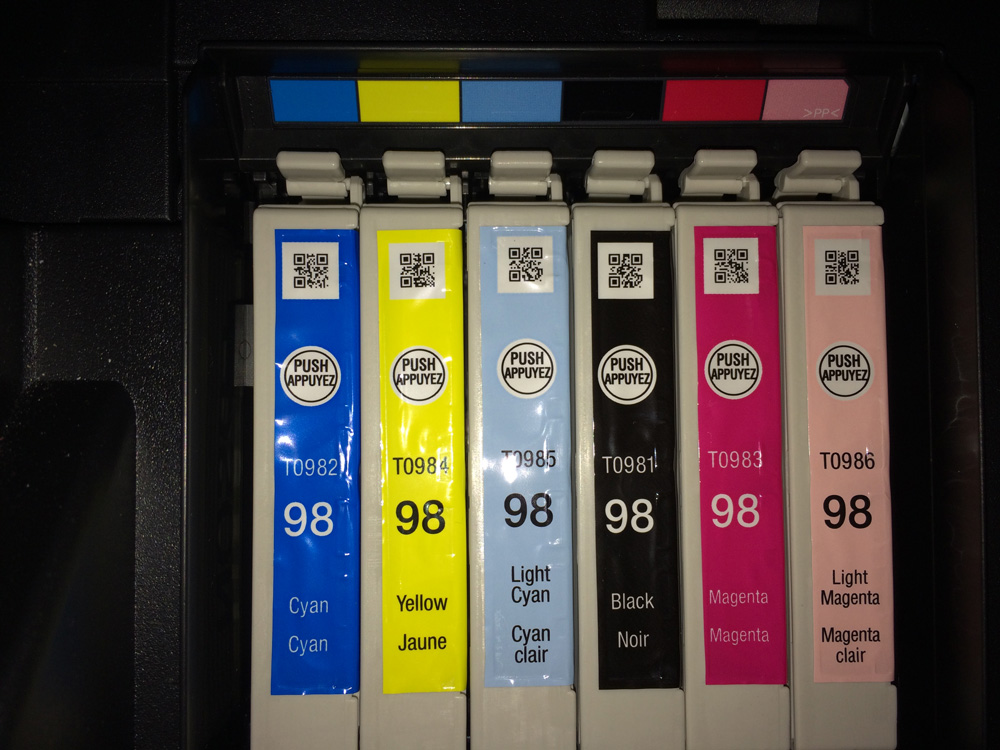There are two basic ways of creating colors: by mixing light and by mixing paint. When we see light, we’re receiving a particular wavelength directly. A red stoplight, for instance, is sending off red wavelengths and nothing else. Light is “additive,” meaning you can add wavelengths together to get new colors. Red + blue = magenta. Not purple, because the more light you add, the brighter the color. Mix enough light of different wavelengths, and you get pure white light. For human eyes, all it takes is one wavelength from the low-energy end of the spectrum (red), one from the middle (green), and one from the high end (blue). These are the primary colors of light.
TVs and computer monitors create color additively–they directly emit light. Each pixel (short for picture element) that we think of as a single dot is actually a triad of lights–one red, one blue, and one green. When all 3 are on at 100%, you get a white dot. All off = black, and different amounts produce different colors. Magenta would be 100%R, 0%G, and 100%B. Unsurprisingly, this method of creating colors is called the RGB color method.
Paints (and inks or pigments), however, work totally differently. They don’t emit light, they only reflect light. So when you see red ink, it’s because the paper is absorbing all the other wavelengths and reflecting only red. So mixing paints is the exact opposite of mixing light–you get darker colors, because each time fewer wavelengths are reflected. Paints are subtractive.
Back to our red + blue example. You might think from grade school days that mixing red paint and blue paint will give you purple. Only sort of. If there are equal parts red and blue, then half of the blue wavelength is absorbed (the half that hits the red paint), and half of the red wavelength is absorbed (the half that hits the blue paint). And of course all other wavelengths are absorbed by both paints. So you’re left with a darkish purple that is nearly black because you’re only getting a fraction of the light you put into it.
So for paints/inks/pigments to work, you need to start with bright colors (again, the exact opposite of light). Just as with light, you can generate nearly every color from three primary colors–but these three colors are the inverse of the primary light colors. Magenta is one of those primary colors, because (as mentioned above) it’s a mix of red and blue light. Red and green light produces Yellow, the second subtractive primary, and blue + green = Cyan, the last.
Printers quickly realized that making black by mixing all 3 subtractive primaries was a messy business, so they standardized on a 4-color palette: Cyan, Magenta, Yellow, and Black. It’s called CMYK because they didn’t want people to think B meant blue or brown; it’s also known as the 4-color process. Graphic designers are familiar with working in the RGB model on a computer but converting images to the CMYK model needed for full-color printing.

